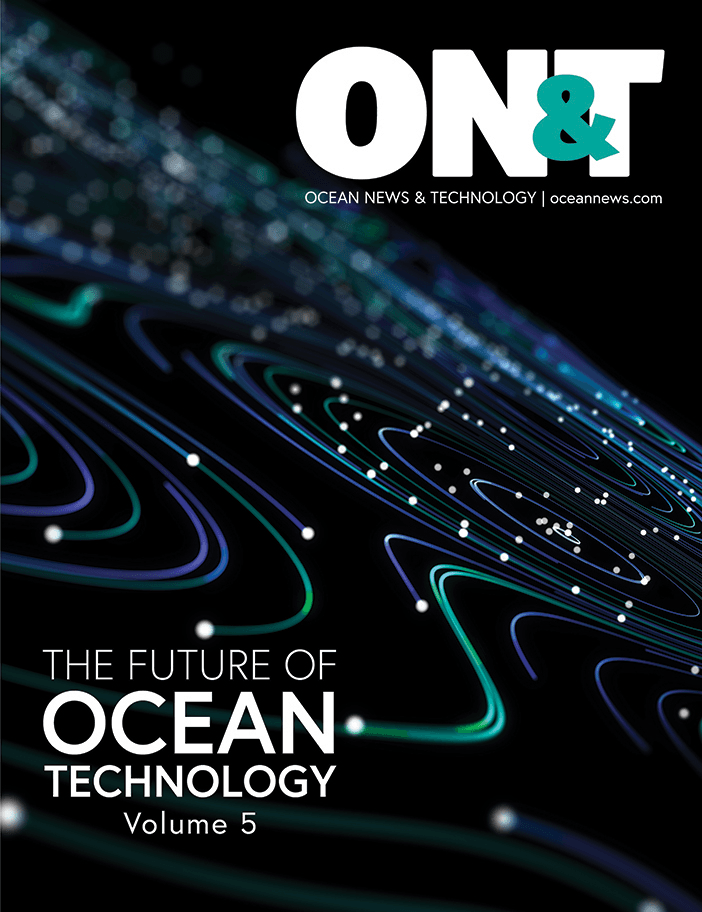Monica DeAngelis, a resident of Portsmouth, Rhode Island, and an employee in NUWC Division Newport’s Corporate Operations Department, attended the 25th Biennial Conference hosted by the Society for Marine Mammalogy from Nov. 11–15. Held in Australia for the first time, the event drew more than 1,400 people from 80 countries and featured roughly 1,000 exhibits, talks, and presentations.
The theme for the conference in 2024 was “Culture and Conservation: Fishing for Change,” as it aimed to shed light on one of the most significant threats to marine mammals worldwide—interactions with fishing gear.
DeAngelis, who has been a member of the Society for Marine Mammalogy since the 1990s, gave a presentation titled “Investigating Collisions with Representative Small and Large Marine Mammals Using a Rigid Dynamics Model.” The objective of the cross-departmental project is to gain a better understanding of collision effects between a vessel or turbine blade and a marine mammal, specifically a seal or a whale.
“This research I feel so strongly about, and it’s so important,” DeAngelis said.
To be chosen to present at this renowned conference, DeAngelis said an abstract must be submitted, which is then scored by a committee. Based on the score, projects are then broken down into long presentations, short presentations, and poster presentations.
DeAngelis was chosen for a short presentation—five minutes—and instead of displaying a series of PowerPoint slides, she showed a video that was produced by members of Division Newport’s Graphics Department.
In addition to DeAngelis, Division Newport employees who appear in the roughly four-minute video are Dr. Emily Guzas and Dr. Irine Chenwi, both employees in Division Newport’s Undersea Warfare (USW) Platforms and Payload Integration Department, and Eric Warner and Valentina Rossell Olmos, employees in the USW Weapons, Vehicles, and Defensive Systems Department.
In the video, DeAngelis mentions being able to obtain a piece of the thoracic wall—or ribcage—from a 42-foot, 25,000-pound fin whale that had to be euthanized after a stranding in a Rhode Island pond. This breakthrough allowed researchers to develop an artificial material that mimicked the animal for collision testing.
To date, marine mammal collision risk management has largely focused on reducing ship speeds in specified areas or seasonal closure mandates. This one-size-fits-all approach, derived for large whales, is applied to all species as a mitigation measure to reduce the likelihood of a lethal outcome.
Based solely on population density and speed, the existing risk models do not include physics-based data for a given collision scenario. This research has produced physics-based modeling of biological collisions to improve data inputs of current risk models.
DeAngelis said she was a little concerned about the turnout for her presentation, considering it was the last portion of the day and 88 degrees outside on the Western Australia coast. But she was pleasantly surprised when roughly 200 people filled the auditorium at the Perth Convention and Exhibition Centre. And the reception to the video was even greater.
“One guy came up to me from the Division of Fisheries and Oceans in Canada who is conducting research on right whales,” DeAngelis said. “He was very excited about the findings, so now he and I are working together to see if we can get this work to go beyond Division Newport. There are so many agencies and people in academia who could take this and really go far with it.”
Having a presence at conferences of this caliber is important for Division Newport, DeAngelis said, because there is a lot of networking taking place.
“At night, when the conference portion had wrapped up, many of the attendees got together, where they would continue to talk about their research in the field and network,” she said. “It’s literally from when you’d walk out of your hotel room when you’d bump into somebody until you close your hotel door for the night. You’re on all of the time.”
Exploring Australia
DeAngelis didn’t make the long trip Down Under alone. Accompanying her was her daughter Bella Barber, a senior in high school who is mulling a future in the field of science—specifically anatomy or physiology.
A few days ahead of the conference, the duo flew into Sydney for some sightseeing, where they climbed the Sydney Harbour Bridge, took a trip to the famed Opera House, and completed the 6-kilometer walk from Bondi Beach to Coogee Beach, one of Sydney’s most iconic walks along cliff tops to the beaches.
Once in Perth, they visited a sanctuary island for kangaroos, got up close and personal with a Quokka (a marsupial roughly the size of a domestic cat), and toured Freemantle, where DeAngelis touched the controversial winged keel of Australia II, the winning boat in the 1983 America’s Cup sailing competition in Newport.
“Any place I go for work, I try to learn about the area because you have to appreciate where you are,” DeAngelis said. “You just try to absorb everything you can.”
The conference consisted of five full days of activity, and DeAngelis and her daughter attended as many presentations as they could—even splitting up at times to “divide and conquer,” DeAngelis said. “Then we compared notes a lunch.”
Bella, who is in the process of choosing a college, did some networking of her own, chatting with graduate students and professors who were in attendance.
“She told me that she never would have learned this stuff in school and that it was such a special trip for her,” DeAngelis said.
While the Biennial Conference is slated for 2026 in Puerto Rico, DeAngelis has inquired about Newport potentially hosting the event in the future.
“I said that Newport, Rhode Island, isn’t that bad of a place,” she said. “I said the Navy’s there, and this is a destination location with plenty of hotels and restaurants. I don’t know when in the future, but I think I piqued the interest of a few people.”

